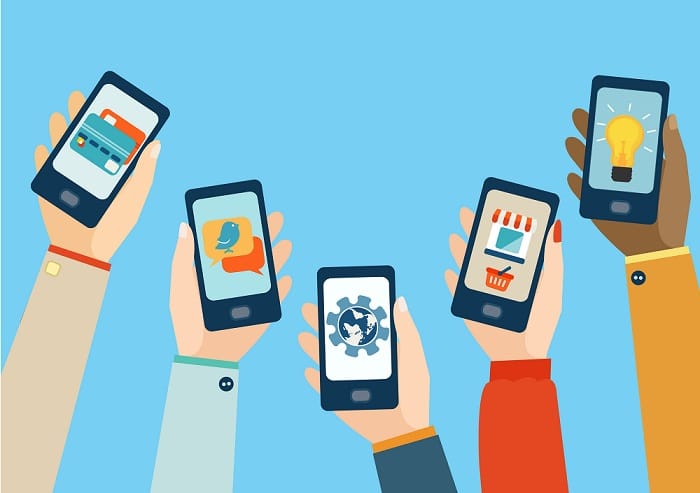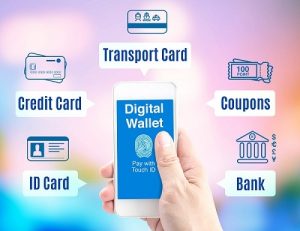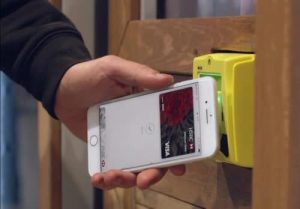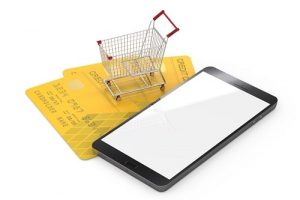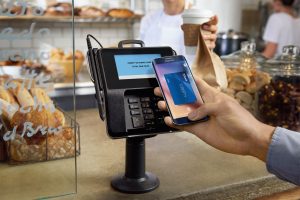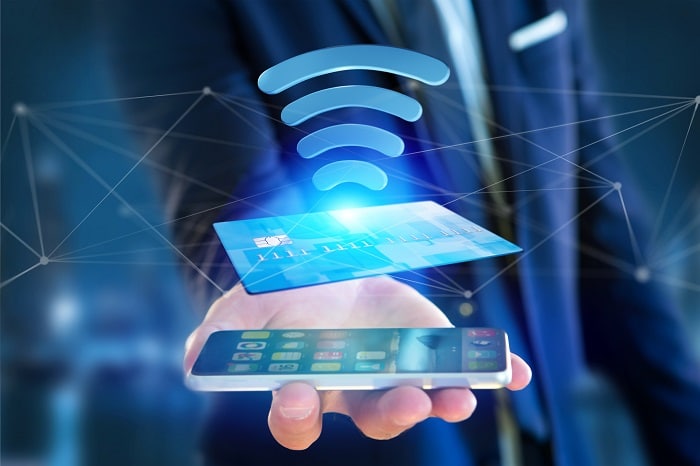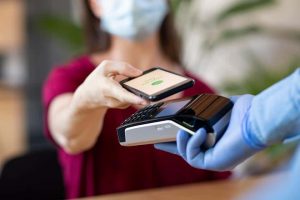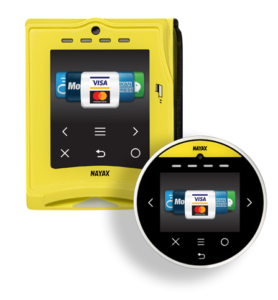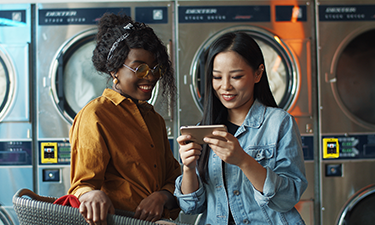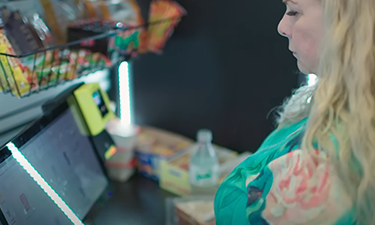15 Things You Should Know About Mobile Payments and Mobile Wallets
The latest frontier in cashless payment acceptance is mobile wallets and digital payments. The introduction of mobile wallets transforms smartphones and other NFC wearables into secure and convenient payment tools. By adding Point of Sale terminals that support NFC and QR code mobile payments, retailers will drive the growth of the newest kid on the block.
For retail operators, accepting another form of payment gives a competitive advantage, and for consumers, there is the convenience factor. In addition, there are many other benefits for consumers and operators alike, which we will examine in this deep dive into mobile payment technology, along with other common questions you might be having about mobile wallets.
Table of Contents
1. What are mobile payments? And what are mobile wallets?
Mobile payment is a broad umbrella term for smartphone-enabled payment which includes the use of mobile wallets via NFC, Bluetooth and QR codes. You might have heard mobile wallets being referred to as digital wallets or e-wallets. Mobile payment technology can include mobile banking apps, with the apps created by specific banks. Digital wallet tends to refer to online services while e-wallets and mobile wallets are smartphone-focused.
These devices store digital versions of things you usually keep in your wallet, namely credit cards and debit cards, but they can also store airline boarding passes, reward cards, and concert tickets.
Smartphones facilitate complete transactions and remove the need for cash or a physical card to interact with a POS (point of sale) machine. Online payments are completely remote while proximity payment is used in attended and unattended retail businesses. For contactless mobile payment, most proximity payment methods are still backed by credit and debit cards, which are often stored in an e-wallet.
2. How does mobile payment work? What is NFC?
Most mobile wallets rely on a technology called near-fied communication (NFC). NFC enables the communication between a phone and a payment terminal without physical contact, allowing the exchange of small pieces of data via radio waves. To make this technology more secure the data can only communicate within a 2-inch range. These days most smartphones come equipped with an NFC reader.
3. How safe are mobile payments? Are mobile wallets secure?
This is a common question and most people are surprised to learn that mobile payments are safer than physical cards, and that their personal data is more secure when using mobile payments.
Mobile payments offer consumers two layers of protection. The first layer of security is provided by the device itself, which includes passcodes and biometric authentication such as fingerprints or facial recognition.
The other layer is data encryption supplied by a merchant’s payment processor using Payment Card Industry (PCI) validated methods. Any time a consumer pays by mobile wallet, a one-time coded version of the card is used to authorize payment, valid only for the current transaction. Hackers can’t access consumers’ sensitive data because the financial information isn’t transferred at the time of the transaction.
Of course, consumers need to activate the first layer of protection on some devices and be aware of other safety factors. Mobile wallet users need to ensure they have passcodes or PINs, biometric authentication and preferably use two-factor authentication. They need to be observant of malware, clone applications, use a safe browser or a VPN, and not use public Wi-Fi networks.
Ask us about our NFC payment readers
How can mobile wallets help the unbanked?
The story of M-Pesa and the digitization of banking in Kenya
Mobile wallets can go beyond digitizing payment – they can also digitize the entire banking experience and help the unbanked, citizens who traditionally wouldn’t have access to formal banking, gain access to a variety of mobile financial services.
In 2007 in Kenya, M-Pesa, a mobile payment system offered by telecom Safaricom began as a sim-card-based money transfer service, intended for microlending. When Beta testers used the service for peer-to-peer transfers, choosing to send small amounts of money to each other, the company decided to market the company with remittance messaging.
The service allowed phone owners to turn their mobile minutes (bought with cash) into a digital currency and essentially made the phone into a virtual bank account. At the time only 14% of the country had bank accounts while 54% of the population had a cell phone, giving these consumers more than cash as a payment option without needing to open a traditional bank account.
Why digital banking succeeded in Kenya
Fast forward a decade later and 93% of the population have access to mobile payments and M-Pesa has 25.57 million customers (more than 45% of the population) and an estimated 48.76 % of Kenya’s GDP is processed over M-Pesa.
Safaricom and M-Pesa took a mobile-first approach and understood that the best way to serve wider segments of the population was through mobile phone services. They also understood that traditional bank fees were too high and knew their customers’ pricing. Up until then, people in low-income segments preferred cash because they weren’t charged a lot to access their own money. M-Pesa was able to succeed because it offered micro-payments, and because cell phone penetration rates were much higher than bank account holders.
A Pan-African financial platform
The financial services have expanded beyond Kenya. M-Pesa is available in Tanzania, the DRC, Mozambique, Egypt, Lesotho, Ghana, and Ethiopia, and processes more than $10 billion per month in Africa.
With the success of M-Pesa, more services have been added. Customers can use the services to pay their rent or utility bills, and loans, insurance, and savings are also offered. With time the company has also added a ride-sharing service, called Little, an e-commerce platform – Masoko, and a music streaming service called Songa.
Digitizing the unbanked
M-Pesa and its competitors hope to bring about more financial inclusion by deeper penetrating the unbanked. Research in 2018 estimated that 1.7 billion people or 31% of the world don’t have bank accounts. The African continent has the lowest bank branch penetrations with only 5 bank branches per 100,000 people (compared to 32 per 100,000 in North America). M-Pesa hopes to eventually transform into the bank, and reduce the unbanked rates in African countries, and other unbanked nations.
4. What are the benefits of mobile payments?
For consumers
Convenient, user-friendly experience – For many people carrying a phone is standard, but a wallet is carried intentionally. As smartphones become all-in-one devices, digital wallets and financial technology are natural progressions to meet consumer needs. By adding acceptance of mobile payments, you understand your customer’s pain points and allow for deeper engagement with consumers. With mobile wallets, consumers won’t run out of cash or need to carry a wallet, allowing for impulse purchases.
- Safer payment method – Using a mobile phone for payment reduces the risk associated with carrying cash or a card. Consumers’ data is not vulnerable to hacking or their cards being cloned. Additionally, biometric authentication offers an extra layer of security for consumers.
- Speed – With mobile wallets, consumers only need to present their phone, and they are free to go in seconds. Unlike chip and pin cards, consumers are free to put their phones away while the transaction processes. There is no inserting, PIN codes, or swiping, and as a payment method, it is exempt from the PSD2 regulation in the EU.
For operators
More sales and engagement – Offering customers their preferred payment method operators can increase conversion. Accepting newer payment types shows consumers you are keeping up with technology trends and can help develop trust and engagement.
- Wider appeal – As people become more accustomed and expect mobile wallet payment as a standard, providing mobile wallet acceptance will make the difference between them choosing one business over another. Research has shown that early adopters of mobile wallets have also consistently spent twice as much as customers paying with other payment methods.
- Integrate loyalty – Loyalty is a driving factor for many mobile wallet adopters. These customers choose a program based on the benefits it can give them and including rewards, discounts, alerts, and e-receipts. With NFC payment technology, merchants can integrate customer loyalty programs into mobile payment, and customize reward programs. This can be especially effective because loyalty programs can help operators gather analytics about their customers to provide a more customized offering.
5. How many mobile payment users are there?
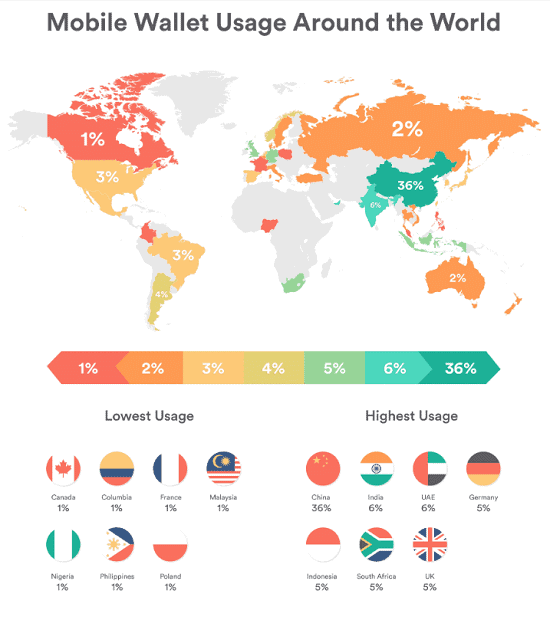
Globally there are estimated to be 2.07 billion mobile wallet users for payments and money transfers. The countries with the highest percentage of mobile wallets are China, India, UAE, Germany, Indonesia, South Africa, and the UK. The countries with the fastest-growing usage of mobile payment technology are India, Indonesia, Mexico, and Germany.
Source: eMarketer
6. Wouldn’t mobile payments make the checkout process longer?
On the contrary, e wallets and pay as you go phones are leagues faster than the traditional cash payment method and significantly quicker than using a debit or credit card that needs to be swiped or inserted into a card reading machine. With a digital wallet, all you need to do is take out your phone, punch in your passcode or fingerprint, and tap the terminal to pay.
When a New York Times reporter compared the time difference between plastic and mobile payment, he discovered that with a chip card, the transaction took eight seconds before a receipt started printing, while Apple Pay and Samsung Pay took only three seconds.
Speed, therefore, is one of the most attractive advantages of a contactless digital wallet or payphone. Leveraging a phone pay system allows retailers to do more sales in a short amount of time. And this, in addition to helping businesses drum up profits, allows them to save costs as well.
It’s no secret that serpentine queues at cash registers can hurt businesses. Starbucks has confessed to investors that the long lines for its cold beverages have routinely scared away customers. Grocery chains like Trader Joe’s and Walmart have also admitted in the past that slow checkouts turn off many.
Charles Holley, the retired CFO of Walmart, has even said that for every extra second that gets added to its average checkout transaction time, the company has to pay an additional $12 million in cashier wages. So, when the food retailer announced in June 2020 that it was testing out ‘self-checkout only’ stores, it seemed like the only logical thing to do. At Walmart, when customers are done shopping, they have an option to go to any checkout lane, scan the items, hold their phone over the QR code on the register, and pay using the store’s payment app called Walmart Pay.
We live in an era when a smartphone, for most, has become more like an additional limb than a tech tool. A customer may forget their wallet at home, but it’s unlikely that they will step out without their trusted phones. Therefore, even if the customer makes the unpleasant discovery of their wallet being missing while standing in the checkout line, they can always use the pay by phone option to make the purchase instead of furiously rummaging through their handbag or pockets and holding up the queue. All in all, accepting mobile payments will only make the checkout process quicker for you and your customers.
Start accepting mobile payments
7. Can a mobile wallet do anything except make payments?
Though the primary function of a digital wallet or a mobile wallet is to offer unparalleled speed and convenience to customers as they make purchases, leading-edge mobile payment solution providers pack their payment devices with a host of value-add features.
Take marketing opportunities, for example. By offering promotions, real-time specials, location-based discounts, topical notifications, and engaging gamification features inside the payment app, merchants get an opportunity to create significant customer value. This, in turn, increases the adoption of mobile payment by the customers.
Businesses can also use e-wallets to run loyalty programs more efficiently and increase customer retention. A survey of 2,000 US- and UK-based customers has revealed that 69 percent of consumers are more likely to use a loyalty card if it is on their payphone. The survey further found that 73 percent of consumers are more likely to join a loyalty program if they could see their points and reward coupon history on their mobile phone in real-time.
Walmart, Starbucks, and Walgreens are some popular examples of organizations that have integrated rewards and coupons within their payment app and witnessed a huge uptick in repeat customers.
Marketers, meanwhile, stand to gain a lot of valuable insights from the customers who pay by phone. A payment app provides retailers with consistent purchase data mapped against particular customers. This systematic record of customer behavior can be used to fuel targeted marketing strategies and to create a customized shopping experience for patrons. Concurrently, customers get a better understanding of their spending since they can also easily track what purchases they have made using e-wallets.
Innovative businesses have started using their mobile payment app to provide a seamless, omnichannel experience to customers. Many restaurants and bistros now offer a mobile order-ahead service as an extra perk.
8. How do mobile payments save costs for businesses?
Though it might not be the most obvious function of pay with the phone system, mobile payment can actually have significant cost-saving advantages for merchants. Managing a paper trail obviously does not happen for free, but did you know cash-handling costs for businesses range between 4.7 percent to over 15 percent of the revenue? Research reveals that these costs are often hidden since they are part of a supervisor’s or manager’s job rather than their complete focus.
Think about the day-to-day effort that goes into opening and closing drawers: counting cash, double-checking tills, maintaining adequate change throughout the working hours, monitoring the cash box for fraud or theft, identifying counterfeit cash, investigating why cash is missing, preparing for and coordinating the deposits to the bank, etc.
According to Visa, businesses end up spending almost three times as many hours while processing cash payments as compared to digital ones. Clearly, all this time could be better spent in more productive, consumer-facing activities that would actually drive sales and help the business grow.
That’s not all. There are other hidden costs also that cash-dominant establishments have to incur, such as those associated with staff training and auditing tills as well as the back-office and banking charges. Fewer cash transactions can bring these costs down considerably. Transitioning to a phone pay method also reduces the chances of human error in calculating and managing cash.
What’s more, switching from a paper-based, labor-intensive system to a phone pay system allows retailers to escape from the costly swipe fees that card companies usually charge from merchants. It is estimated that every year, merchants pay almost $90 billion in swipe fees to process debit and credit cards.
Since e-wallets and prepay phones connect directly to a consumer’s bank account, the traditional debit and credit card networks can be avoided. This is why, in hopes to mimic the roaring success of Starbucks and Walmart, more and more retailers are now seeking ways to provide a branded digital wallet experience to their customers.
Start accepting mobile payments
9. How does mobile payment impact customer experience?
Today, e-commerce is picking up because it allows people to purchase any item at the click of a button. A mobile payment option can help to replicate that experience in-store with the added advantage that customers can touch and see the products first-hand. A payment app or a mobile wallet makes this possible by eliminating the friction that accompanies in-store retail because consumers no longer have to wait in a queue to visit the conventional till.
Let’s not forget that busy shoppers with demanding jobs and limited time for their families have little patience for a long-drawn checkout process. Retailers need to take cognizance of the fact that customers are even willing to switch brands if the other store is able to provide a better checkout experience to them, as Forrester Consulting discovered in a recent survey.
The problem, as research has proven, is that shoppers psychologically perceive the checkout wait time to be far longer than it actually is. If someone has been standing in a queue for 5 minutes and you ask them how long they have waited, they will say 15 minutes. Such a scenario often ends up in a customer leaving the store empty-handed in frustration.
In the United States alone, retailers lose an estimated $38 billion annually in potential sales because of lengthy wait times. Another $1.1 billion are lost when customers decide to walk because the store doesn’t offer their preferred payment option. As such, pay by phone system not only becomes an indispensable piece of the retail puzzle, but it also comes in handy when a customer is not carrying sufficient cash or has a card that gets declined.
Moreover, customer experience is directly linked to customer service. When stores offer a faster, convenient, and autonomous checkout process through e-wallets and prepay phones, more employees become free to walk the store floor and engage with the shoppers. By answering customers’ questions, providing demos, and interacting with them on a personal level, employees are able to improve the level of service they provide, and consequently the customer experience, by leaps and bounds.
At the same time, pay by phone system is also preferable because if a customer needs a refund, the mobile payment solution provider can directly issue automated, remote refunds to the customer’s digital wallet. Not having to wait for the typical 7- to 15-day period that banks can take to process non-mobile wallet refunds only adds to the overall customer experience.
10. Should a small business offer mobile payments?
A 2019 study shows that the majority of small businesses around the world – a staggering 61 percent – struggle with cash flow. And negative cash flow has a deep, adverse effect on small businesses. In the study, 32 percent of the respondents confessed that they were unable to either pay vendors, payback pending loans, or pay themselves or their employees due to cash flow issues.
But why do these issues arise? Is it because customers don’t pay within the stipulated terms of the payment system? Yes and no.
While 34 percent of small business owners report that they do need to chase money all over town, for nearly two-thirds of the businesses (66 percent), the biggest impact on the cash flow comes from the time it takes for the money to process after receiving a payment.
Accepting mobile payment can reduce a business’s dependence on cash. Leading payment processing solutions allow self-employed service professionals or business owners to raise invoices directly from the payment app – providing the added advantage that a customer cannot refute the receipt of the invoice, or claim that the paper has been misplaced. With the app collating actionable data on each customer’s payment history, business owners can better strategize plans for the future, including demanding advance payment from shifty clients.
A payphone system helps to future proof a small business and enables them to stay relevant to the cash-averse Gen-Z customers. So, there’s really no reason for merchants to not allow pay by phone transactions. After all, a cash-strapped small business does not have to invest in an expensive Point of Sale (POS) hardware, such as a traditional credit card reader machine, to start accepting payphone payments. An affordable, nifty yet powerful mobile point of sale terminal (mPOS) will connect to any smartphone or tablet device, empowering you to start accepting mobile payment.
When you don’t restrict your customers to cash transactions and provide them with their preferred method of payment, they often end up spending more at your store and leaving better tips too. Suffice to say, in today’s day and age, alienating itself from the consumer is too huge a risk for any business – big or small. You may be happy with the payment options you provide, but it doesn’t mean that your customers are. It’s better to accept all kinds of payment methods and make it easier for your customer to complete a purchase.
Start accepting mobile payments
11. How will I issue a refund to a customer for a mobile payment? Who will handle the chargebacks?
The right mobile payment solution will digitize not only the transaction process, but it would also allow for the automation of the refund process. Businesses, in fact, can save themselves from a lot of hassle and reduce their operational costs of refunds by digitizing the customer payment refund process.
The same management tools that allow businesses to view customers’ product and payment history can be used to uncover hidden trends in refunds too. For example, if you notice several customers returning a particular product after purchase, it would be prudent to check if the anomaly or defect can be isolated to an individual batch, plant, process, or shift.
As far as chargebacks are concerned, it would be wise to partner with a mobile payment solution provider who takes the onus to handle chargebacks for its operators. Since the whole idea behind switching to a pay with phone system is to incorporate ease and convenience into the business, your fintech service provider should save you from the hassle of contacting the issuer.
12. What are the most popular mobile payment apps?
Which is the best mobile payment app? Who are the main mobile payment technology players?
The mobile wallet landscape is crowded and in most places, they are in still in early development. Many players are competing however the successful ones seem to be those tied to a high-growth core product or service, while stand-alone ones will struggle to stand out.
Because the marketplace is crowded its best to adopt an honor all wallet types relevant to your location policy, similar to the honor-all-cards policy that retailers have always held.
In Asia, the QR code mobile wallets are the biggest players, with Alipay and WeChat Pay dominating the scene in China, and Paytm enjoying a lot of popularity in India. China has over 1.6 billion active wallets, accounting for 56% of the global market share. The reason it has become so prominent is because China leapfrogged credit cards, whereas credit cards and their reward programs enjoy a fierce loyalty and legacy in countries like the USA.
Source: PCMag
The top players seem to be Apple, Google and Samsung, who have all invested in proprietary wallets by integrating NFC technology into their products and thereby validate the role they foresee them having.
In the P2P (peer to peer) arena, there are many prominent players including Venmo, PayPal, Xoom, Zelle, Apple Pay, Circle Pay, G Pay Send, and Square Cash. Understanding the value in loyalty, Venmo, Samsung, PayPal, Apple Pay, Google Pay have all included loyalty programs in their offerings.
It’s important to accommodate locally used apps, which appeal to a specific market. These include the Scandinavian Mobile Pay, Vipps and Swish, Interac in Canada, Kakao Pay in South Korea, Klarna and many other domestic apps.
Another player in the mobile wallet payment landscape are closed loop apps, which can be used for one company and retailer only. A good example is the Starbucks loyalty app, which up until recently was the most downloaded mobile payment and loyalty app in the US. Now Apple has overtaken that feat.
13. What is the future of mobile payments? Are mobile payments just a fad?
These days most phones are shipped with mobile wallet capabilities and it’s becoming standard technology. For mobile phone proximity payment apps there are estimated to be 938.2 million users however that is set to go up. Mobile wallet user numbers grow by 140 million annually, and with increasing number of new users and loyalty benefits pushing use, there will be more uptake.
The Importance of Gen Z
Gen Z is the generation born after 1995-2012 and their relationship with money and payment is remarkably different to other generations. Because this generation has grown up with smartphones and touchscreens, they own less laptops and desktops proportionally. Overall they have a higher rate of smartphone ownership and there is a correlation between age and mobile wallet usage. In the US, 70% of Gen Z have made at least one mobile payment in the last year.
They are more comfortable using digital money platforms, use smartphone apps to budget their spending, and anticipate using supplementary banking services and distruptive technology. Gen Z value fast delivery and seamless service, which makes their lives easier, and seek companies that can do that for them. They frequently use online banking, P2P apps and will increasingly take up mobile banking and mobile payments.
Start accepting mobile payments
14. What is the effect of the COVID-19 pandemic on mobile payments?
When the 2020 Worldpay Global Payments Report was released early this year, it provided a comprehensive analysis and forecast of consumer payment trends in 40 countries around the world. The research for that report was conducted before the novel coronavirus had spread its tentacles, sparked nationwide shutdowns, and changed consumer habits the world over. That research found that mobile wallets are set to become the leading POS payment method globally by 2023.
That milestone may be achieved even sooner, what with a highly-communicable disease prompting the World Health Organization (WHO) to advise people to wash or sanitize their hands after handling physical money – and motivated consumers using more and more contactless payment methods such as leveraging a digital wallet via NFC, Bluetooth, or QR codes.
Since the novel coronavirus can survive on banknotes for up to 28 days, many nations across the world have declared a war on cash. And to ensure the health and safety of both customers and employees, merchants and service providers have also been emphatic in their demand for cashless transactions. As a result, contactless payments have witnessed a dramatic upsurge in cash-based economies like Japan and Germany as well. New user groups, including older shoppers, have also embraced prepay phones.
In the United States, Apple Pay has seen a 59% increase in POS transactions since March 2020. In Latin America, Visa-supported mobile wallets have gained more than a million users since December 2019, with the pandemic accelerating the trend. The United Nations-based ‘Better Than Cash’ Alliance, in the meantime, is leveraging COVID-19 as a springboard to fast-track the transition of under-digitized countries from cash to mobile payments and advance the Sustainable Development Goals.
According to a June 2020 Stats report, 50 percent of global consumers have been leveraging digital payment methods much more than they used to before the COVID-19 pandemic. And the majority plan to continue to do so even after the disease is contained. This is understandable since the new curbside pickup and buy-online-pick-up-in-store programs, which consumers have happily latched on to, will be hard to maintain with conventional cash transactions post-pandemic.
It must also be noted that as the usage of e-wallets spikes, it has led to an extraordinary urgency for merchants and retailers to be proactive in their adoption of phone pay technology. Forward-thinking businesses that have tailored and customized payment offerings for a discerning customer are already reaping the benefit of exponential growth. Digital adoption is the only way to get ahead of the retail curve.
15. How will mobile payments help my business? How do I offer mobile payments?
Contactless mobile payments are increasingly growing in popularity each year. Altering your acceptance capabilities is an easy way to ensure you don’t get left behind. By adopting this payment technology retailers are able to compete with other businesses, regardless of their size and set up, and offer customer experience they will increasingly come to expect.
According to Retail Dive, mobile wallet users are higher spenders. Additionally, the loyalty programs that motivate consumers to choose particular mobile wallets will ensure you have repeat business, which can improve your revenue by up to 30%.
How do I set up a mobile payment?
Ensure you have installed a payment device that accepts multiple payment methods including mobile wallets, QR codes, and virtual prepaid cards. Review your purchased card reader’s payment integrations to check they support all the wallet brands popular in your region, and you’re set. It’s that simple.
